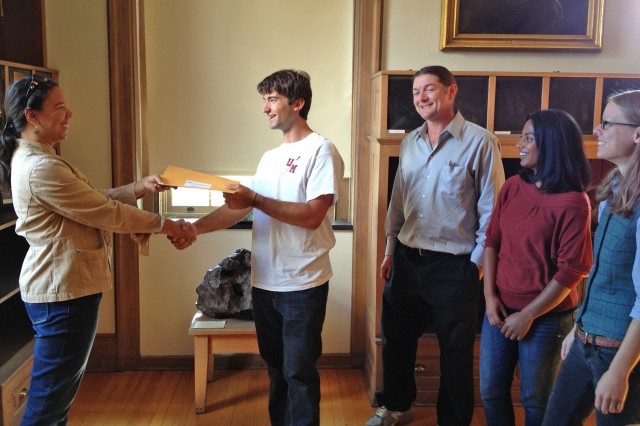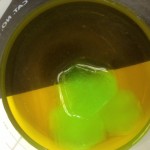Martin ’14 Receives Scholarship For Martian Brine Research

By examining highly-detailed satellite images, researchers can spot small channels formed on the sides of craters on Mars. These channels may be evidence of flowing water on Mars.

Since scientists don’t exactly know what the surface of Mars is composed of, Wesleyan student Peter Martin ’14 created a modeling program that can simulate the kinds of salty water, or brine, solutions that would possibly form on Mars. For his efforts, Martin was awarded the Thomas R. McGetchin Memorial Scholarship Award. The $1,500 prize is given annually by the Universities Space Research Association in honor of the former Lunar and Planetary Institute Director, and is among five scholarship awards presented by the USRA.
Martin, who was selected from 21 applicants, is completing his Martian brine research in the planetary lab of Martha Gilmore, chair and associate professor of earth and environmental sciences.
After developing a modeling program, Martin created actual brines in the lab, and let them evaporate. The salts left behind formed various minerals including sylvite and halite. Martin uses X-ray diffraction (XRD) and visible/near-infrared spectroscopy (VNIR) to analyze the resulting evaporites. Analyses are ongoing, and Martin hopes to identify more minerals.
“The brines tell us a lot about Mars’ surface composition, mineralogy, and even hydrology,” he said.
After graduating, Martin plans to study planetary science education in graduate school.
For more information on the scholarship, see this link.

